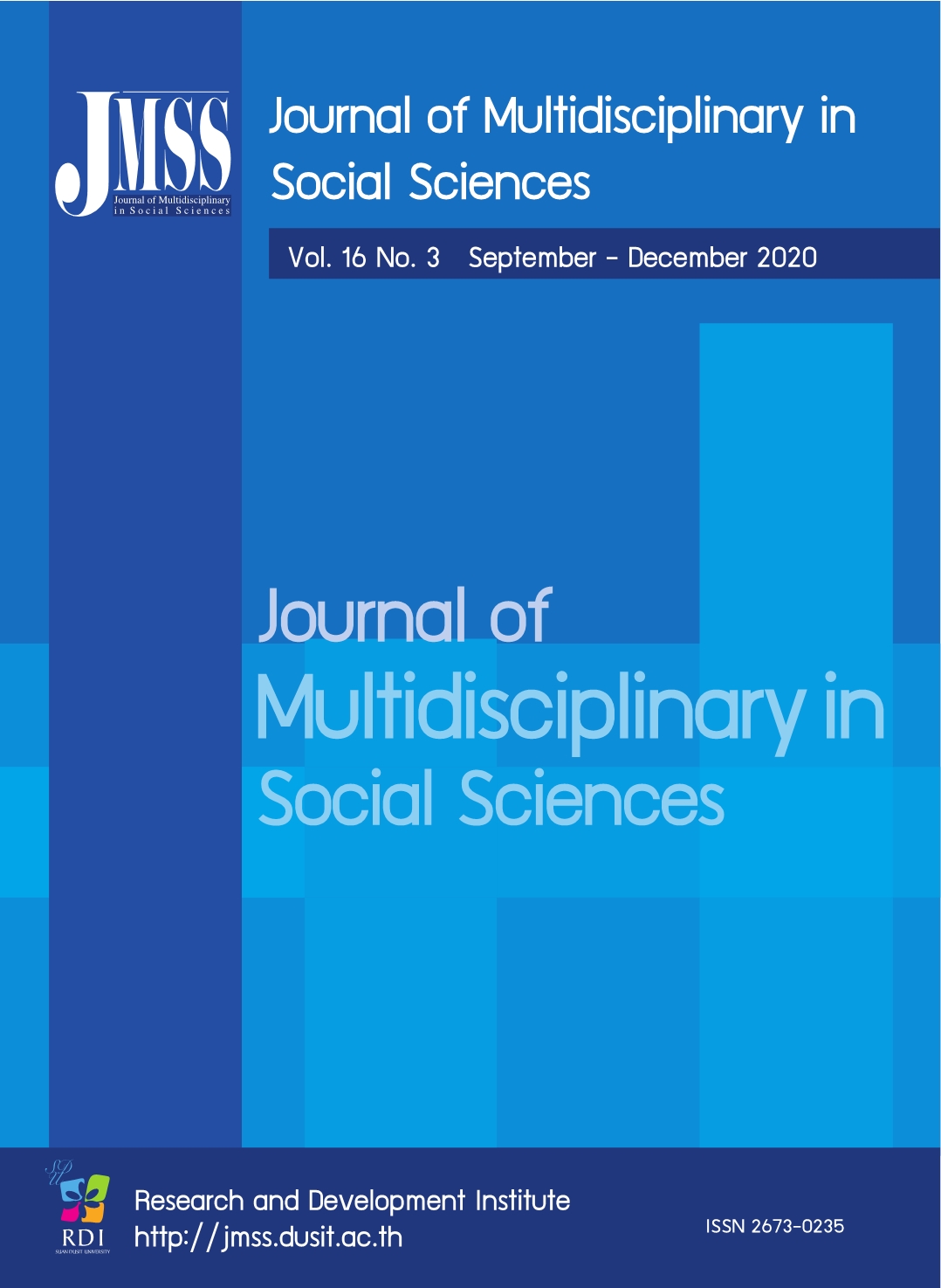Revitalization of Cultural Heritage Virtue for Development of a Living Museum at the Wat Ket Area, Chiang Mai City, Thailand
Keywords:
Long Sa Pao tradition, Localization, Virtue, Living museumAbstract
The research paper entitled ‘Revitalization of Cultural Heritage Virtue for Development of Wat Ket Area, Chiang Mai City Thailand as a Living Museum’ is of two objectives (1) to examine and analyze on the distinctive of social and cultural value in the Long Sa Pao tradition and (2) to revitalize and convey the value of the Long Sa Pao tradition as part of a living museum development.
This research was conducted by the qualitative research method. It focused on a historical study and interviews with community leaders, religious leaders, seniors, knowledgeable and technologists in the Wat Ket Community to collect data. The analysis of core values was carried out using logical suitability between the historical story or events that evoke this tradition; finally, the “virtue” was changed, showing a difference. The diff erence from Loy Krathong in part of the living museum and the uniqueness of t he social and cultural relations of the Wat Ket Community.
The results revealed that the Long Sa Pao Tradition was originated in the Haripunjaya period due to the great loss from the epidemic. It is a community merit-making tradition to dedicate merit to relatives and siblings who have passed away. In this research, it focused on the revitalization of the Long Sa Pao tradition of Wat Ket Community, Chiang Mai Province. The Long Sa Pao tradition has made better relationships among the people in the community. This showed the development potential of community-based tourism and retains an identity in the form of a living museum. This research, therefore, opens a new academic dimension to the practice of the Localization by deepening the values and power of the local capital and the practice of tourism and building a rejuvenating identity
References
Benjakan, P. (2012). Mon: People of Ancient Civilizations in Burma. Retrieved June 12, 2020, from https://www. gotoknow.org/posts/15498
Chairat, W. (2000). Wat Ket Ni Wara Hang Kan Phean-pang. In Charoenmuang, A. D. (Ed.), Chiang Mai towards the 21st century (18-27). Chiang Mai: Chiang Mai City Problems Study Center.
Chairat, W. (2006). Baan Ta Wat Ket. (Waterside community in Wat Ket area). Chiang Mai: Chompoo Kan Phim Lae Thayakekasan Publishing.
Charoenmuang, A. D. (2006). Sustainable Cities in Chiang Mai: a case of the Wat Ket. Chiang Mai: Social Research Institute Chiang Mai University.
Hfocus. (2013). Go Back to the History of the Thai Plague. Retrieved June 12, 2020, from https://www.hfocus.org/content/2013/09/4628
Kanchanaphan, A. (2001). Community Dimension: Local Thinking Methods on Rights, Power and Resource Management. Bangkok: The Thailand Research Fund (TRF).
Kitiarsa, P. (2003). Localism. Bangkok: In - Som Fund for Research Anthropological.
Northern Thai Information Center Chiang Mai University Library. (2012). The History of Yi Peng Festival. Retrieved June 12, 2020, from http://library.cmu.ac.th/ntic/lannatradition/yeepeng-history.php
Prabudhanitisarn, S. (2015). Local “Capital” for Localization Concept, Chiang Mai: Document of Sustainable Land Use and Natural Resource Management. Chiang Mai: Chiang Mai University.
Prabudhanitisarn, S. (2016). Development of Unique Physical and Socio-Cultural Identity for Living Museum at Wat Gate Area, Chiang Mai City. Bangkok: The Thailand Research Fund (TRF).
Thiangburanathum, P. (2010). Conceptual Design and Feasibility for The Living Museum for Mae Hong Son City. Bangkok: The Thailand Research Fund (TRF).
Downloads
Published
How to Cite
Issue
Section
License

This work is licensed under a Creative Commons Attribution-NonCommercial-NoDerivatives 4.0 International License.








